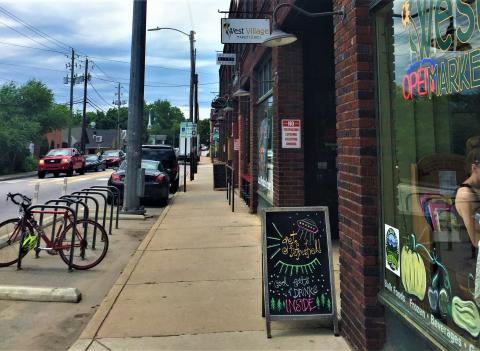What Resilience Means to Communities and Businesses

During the pandemic, the term resilience gained popularity. We have seen people, communities and businesses practice resilience during challenging times. A common definition of resilience is the ability to rebound and recover from a disruption or disturbance. The concept of resilience has roots in psychology and ecology, and has expanded to many fields, including: climate resilience, social-ecological resilience, urban resilience, community economic resilience.
Our Resiliency Academy focuses on the intersection of community resilience and business resilience, bringing together communities and businesses to plan for a more resilient future. Over the course of the academy we heard from 30 speakers representing businesses, municipal staff and experts in NH and beyond, all who shared their interpretation of resilience and what it means to them. Here’s what we learned from our speakers about defining resilience:
Resilience is a process versus an outcome. Practicing resilience is continuous. There is a need to constantly assess and meet new challenges as a community or business owner.
Disruptions and disturbances provide opportunity to spring forward instead of bouncing back to normal. Some have used the pandemic as a springboard to move towards an improved business or community. Challenges, lessons learned and new innovations can be leveraged to become even more resilient moving forward.
Resilient communities and businesses quickly respond and recover. Experiencing a shock requires an immediate response, followed by making decisions for the short and long term to lead to recovery.
Adaptation and flexibility are key to resilience. When systems are no longer functioning, it’s necessary to create change and adapt – implement new ideas, measure progress and adjust. Something that is rigid or tough will break with enough pressure – it is important to be flexible and pliable.
Innovation is a component of resilience. Related to being adaptable and flexible, innovation is the creation and implementation of new ideas or solutions. We saw businesses and communities innovate during the pandemic: offering virtual public meetings, using public spaces for outdoor dining, local businesses using new platforms for online sales, and curbside pickup to name a few.
Community connections and networks matter. We heard about the importance of strong networks and the importance of listening, learning and working with your neighbors, businesses and community members to pull through a shock or disruption. Creating community is an important piece of resilience.
Resilient communities are inclusive. When working on community resilience planning, it is important to focus on inclusion, and broad engagement of the community, especially vulnerable groups to understand needs and challenges.
Leverage mission and vision to be resilient. Businesses shared the importance of a strong mission and vision that serves as a guide during a disruption. It is possible to find ways to adapt and execute new ideas without sacrificing the vision.
Improving and sustaining quality of life is important. Resilience is more than just survival. Resilient communities are places where people want to live and work and are able to thrive despite disruptions and disturbances.
As we continue to navigate life through the pandemic, it is important for businesses and communities to continue to assess and adapt. However, the pandemic is just one example of a disruption or a disturbance, and now is a good time work on resilience to prepare for the future.